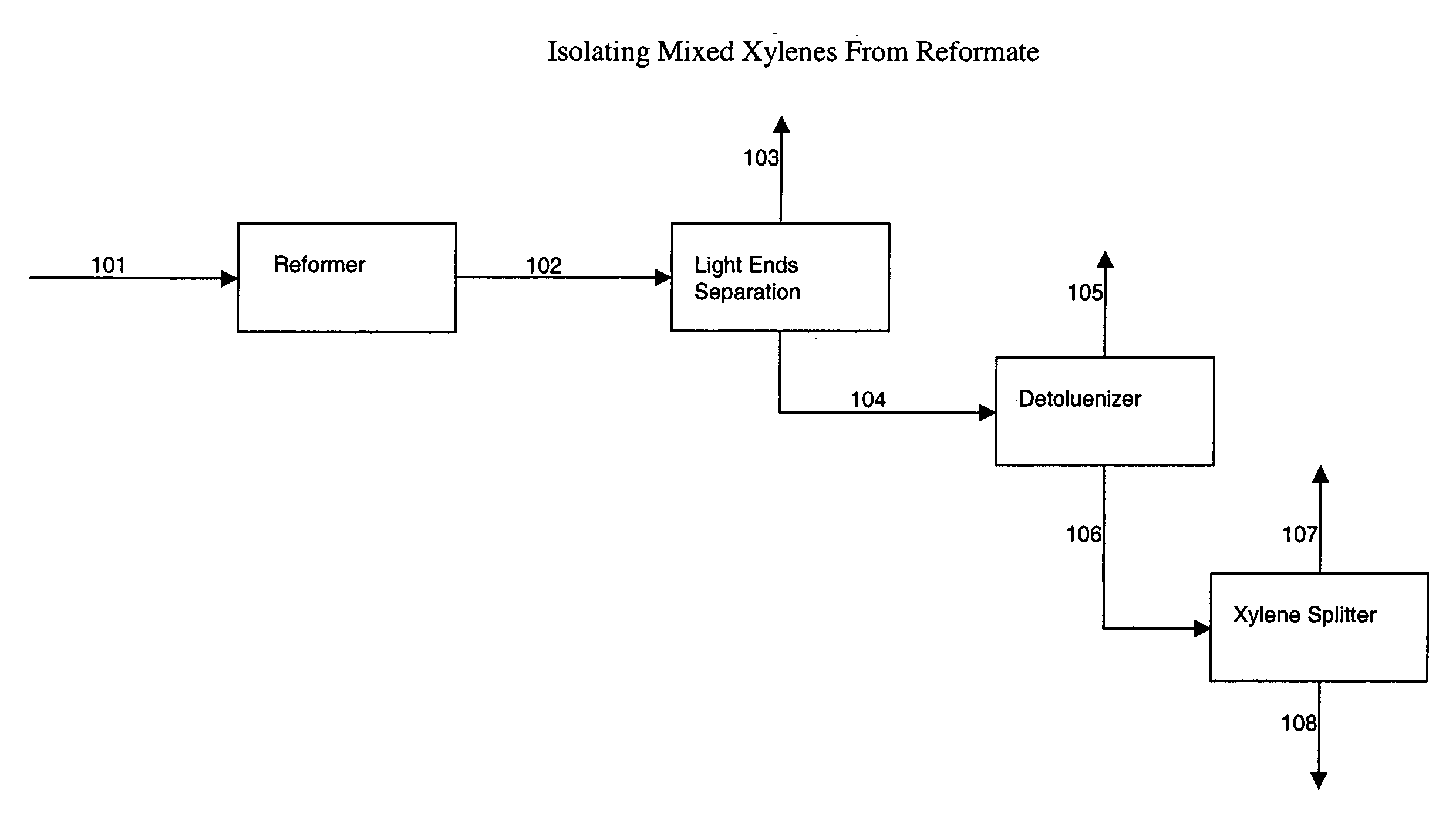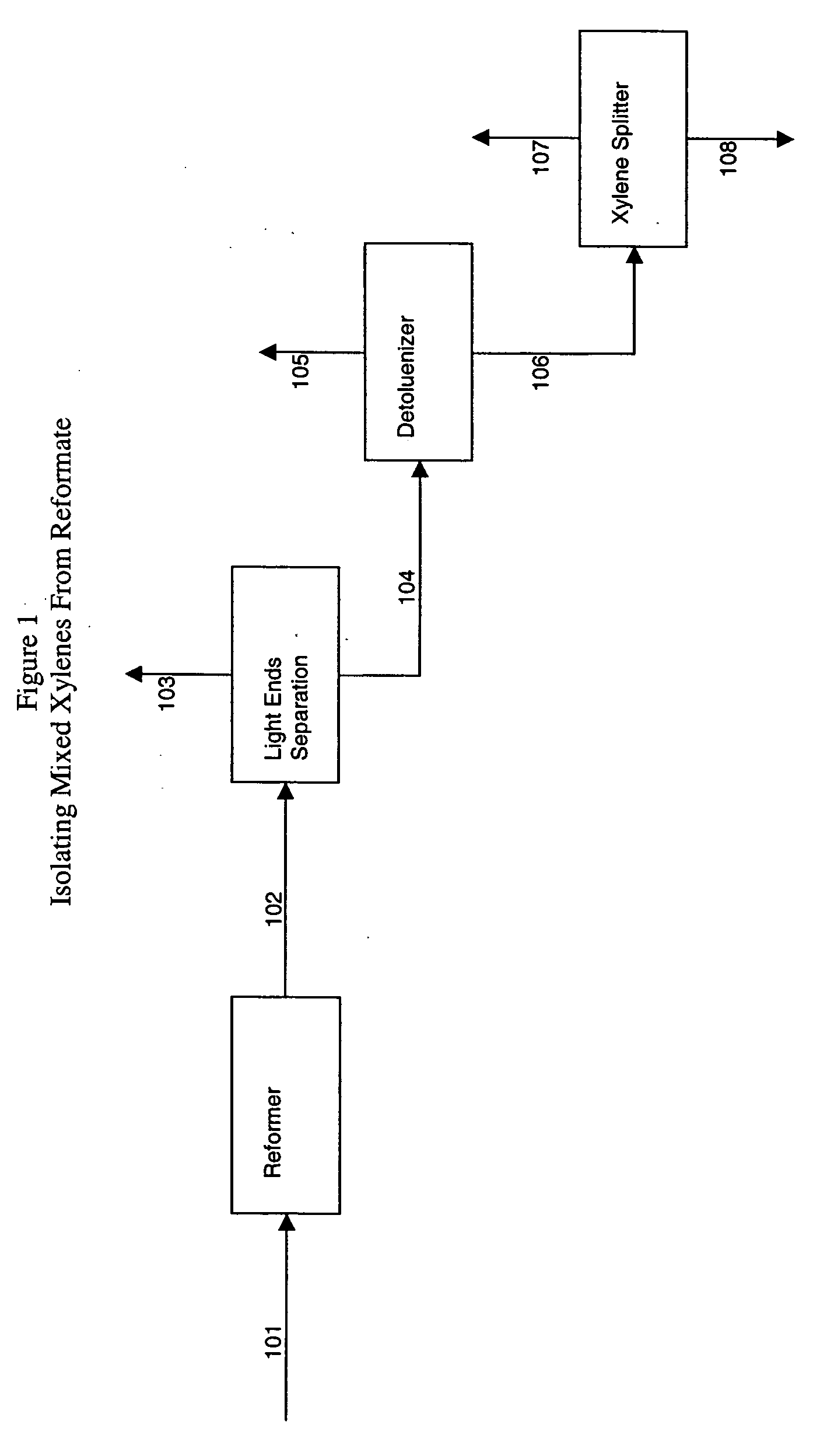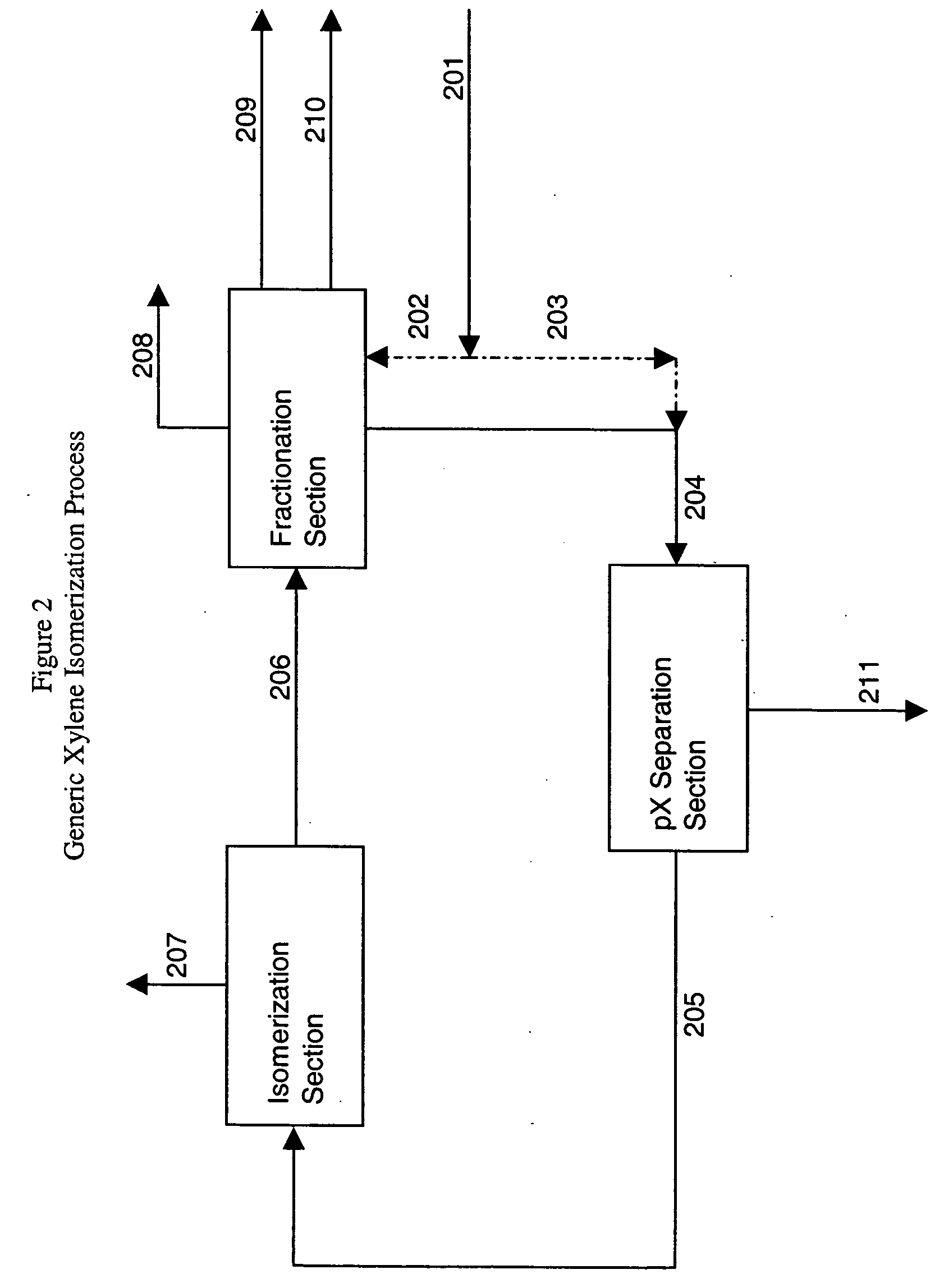Process for recovering paraxylene utilizing ammonia absorption refrigeration
- Summary
- Abstract
- Description
- Claims
- Application Information
AI Technical Summary
Benefits of technology
Problems solved by technology
Method used
Image
Examples
example 1
[0099] Example 1 illustrates how waste heat available on a xylene isomerization unit that uses reformate mixed xylenes feedstock, and waste heat from the towers of a unit for isolating mixed xylenes feedstock from reformate can be used to power an AAR unit in a cascaded ethylene / AAR refrigeration section of a xylene isomerization unit.
[0100] This first part of Example 1 describes using propylene refrigeration to provide cooling duty for comparison purposes to describe the eventual benefits provided by the process steps of the present invention Heating and cooling duties for the xylene isomerization unit and the towers for recovering mixed xylenes from reformate in this example were obtained from computer simulation. For this example, the crystallization section is of the alternate embodiment of the three-stage crystallization section of FIG. 3, comprised of ethylene cooled scraped wall crystallizers in a first stage, and two reslurry scavenger stages. No refrigeration duty is requi...
example 2
[0106] This example will illustrate how waste heat available on an STDP unit can be used to power an AAR unit in a cascaded ethylene / AAR refrigeration section used to supply cooling required by a crystallization unit designed to recover paraxylene from the STDP mixed xylenes.
[0107] The first part of this Example 2 describes using propylene refrigeration to provide cooling duty, but this is done for comparison purposes to describe the eventual savings provided by AAR. The STDP unit produces a nominal 92,000 lb / hr of STDP xylenes having a paraxylene content of about 81 weight percent. In a conventional process the first and second stage crystallizers are cooled via propane refrigeration. The third stage crystallizer is cooled via ethylene refrigeration. The propane refrigeration loop is also used to condense the ethylene. Refrigeration duties and propane evaporation temperatures are as listed below:
PropaneEvaporationDutyTemperature(MMBTU / hr)(° F.)Stage 1 Crystallizers9.812Stage 2 C...
example 3
[0110] This example will illustrate a 3-stage crystallization process for recovering paraxylene from reformate mixed xylenes feedstock wherein AAR is used to refrigerate the second and third stage crystallizers and to subcool and condense ethylene which is used to refrigerate the first stage crystallizers.
[0111] The first part of Example 3 describes using propylene refrigeration to provide cooling duty, but this is done for comparison purposes to describe the eventual savings provided by AAR. Heating and cooling duties for the xylene isomerization unit and the towers for recovering mixed xylenes from reformate in this example were obtained from computer simulations. For this example, the conventional xylene isomerization crystallization section is of the three-stage design illustrated in FIG. 3 and described above, comprised of ethylene cooled scraped wall crystallizers in a first stage, and propane cooled second and third stage crystallizers. The unit produces 125,351 lb / hr of par...
PUM
| Property | Measurement | Unit |
|---|---|---|
| Temperature | aaaaa | aaaaa |
| Temperature | aaaaa | aaaaa |
| Percent by mass | aaaaa | aaaaa |
Abstract
Description
Claims
Application Information
 Login to View More
Login to View More - R&D
- Intellectual Property
- Life Sciences
- Materials
- Tech Scout
- Unparalleled Data Quality
- Higher Quality Content
- 60% Fewer Hallucinations
Browse by: Latest US Patents, China's latest patents, Technical Efficacy Thesaurus, Application Domain, Technology Topic, Popular Technical Reports.
© 2025 PatSnap. All rights reserved.Legal|Privacy policy|Modern Slavery Act Transparency Statement|Sitemap|About US| Contact US: help@patsnap.com



